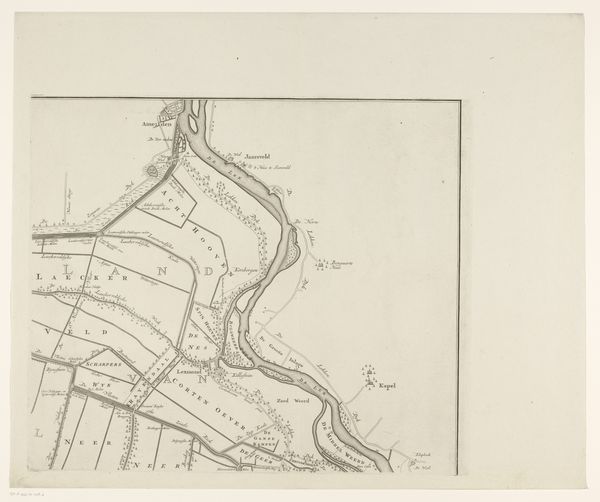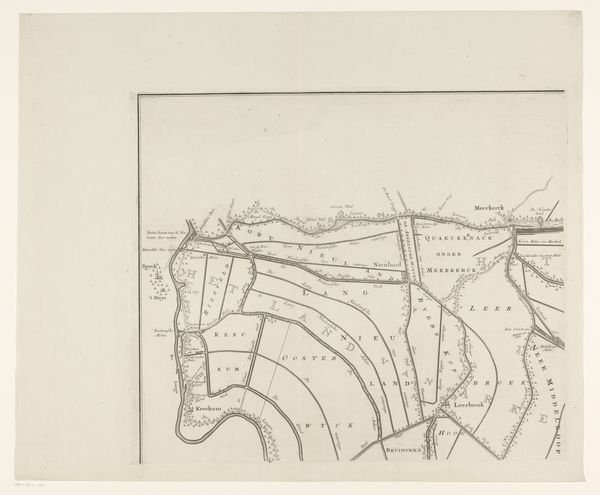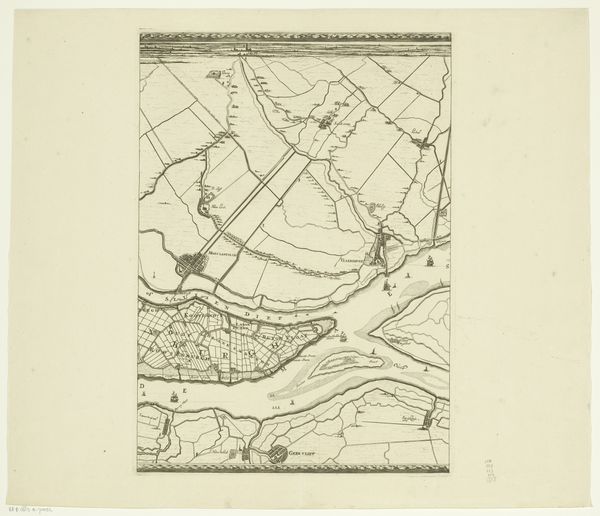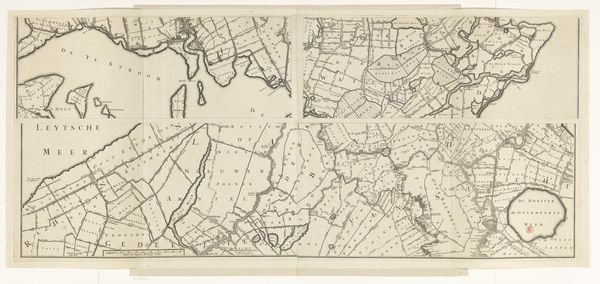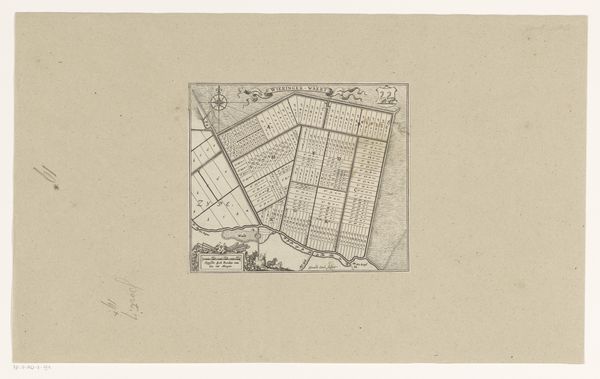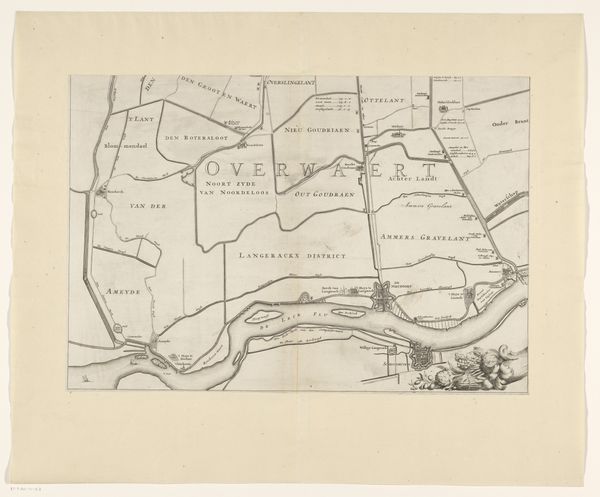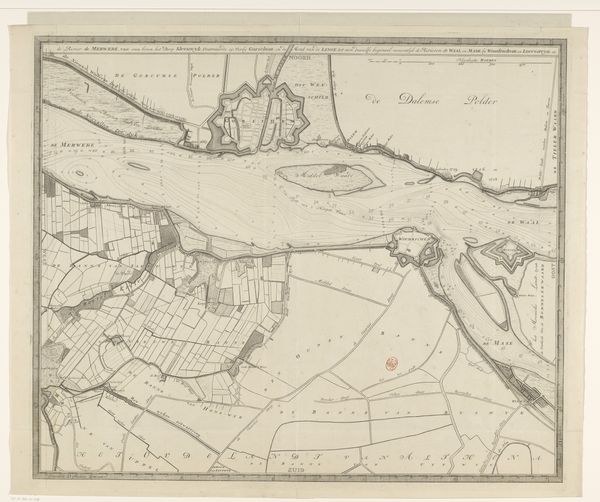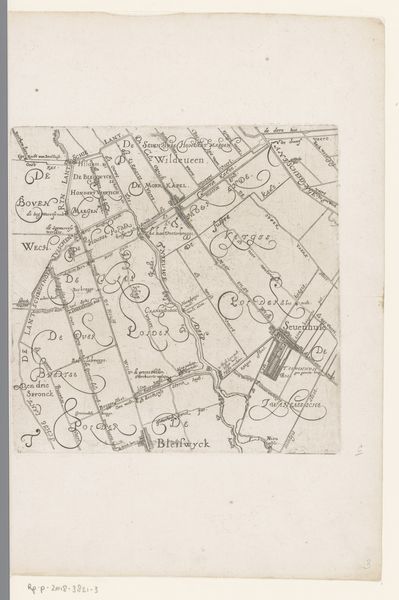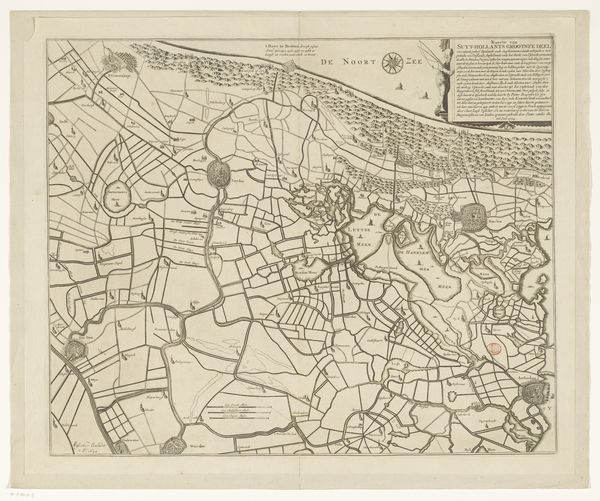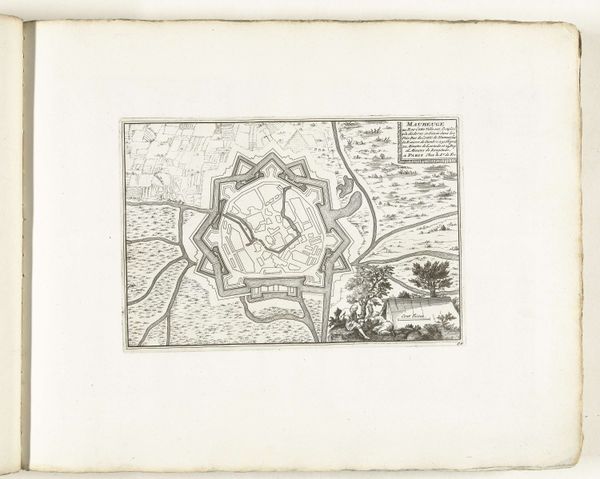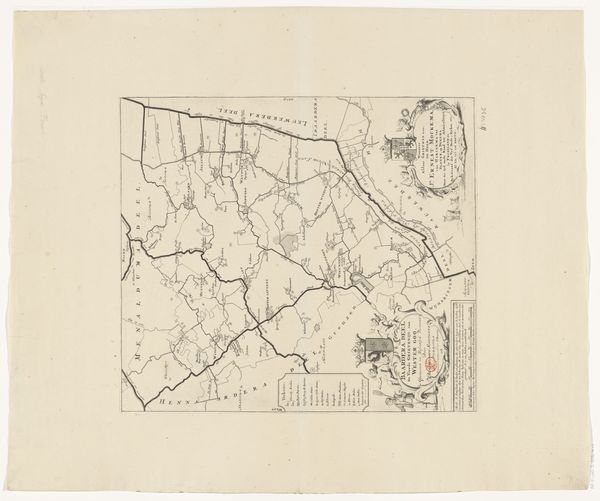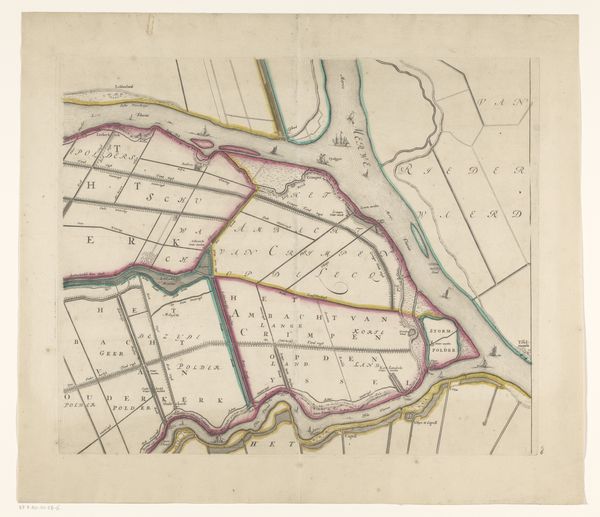
print, etching, engraving
# print
#
etching
#
landscape
#
etching
#
engraving
Dimensions: height 435 mm, width 508 mm
Copyright: Rijks Museum: Open Domain
Curator: Let's delve into this intriguing piece, “Kaart van de Vijfheerenlanden (deel rechtsonder)," created between 1741 and 1787 by Jan van Jagen. The combination of etching and engraving techniques is really interesting here. Editor: Indeed! It feels like peering into the past. I'm curious, what significance do you attribute to the artist's choice of using etching and engraving for a map, given their labor-intensive nature? Curator: I see this map as a powerful commentary on land ownership and control during that era. The meticulous etching and engraving transforms it beyond a mere geographical tool. The sheer labor involved emphasizes the perceived value and importance of the land itself. It speaks to the intense management of territory, of the means and labour employed to manage this specific area. Editor: That's a fascinating angle! So, the map becomes more than just a representation, it embodies the economic and social relations surrounding land. The artistry really elevates it from the functional, doesn't it? Curator: Exactly! Think about the production. Engraving especially demands skilled craftsmanship, essentially a form of specialized labor, similar to farming the land itself. This intricate detail underlines not just what is depicted, but *how* it was produced – highlighting the socioeconomic infrastructure necessary for the Vijfheerenlanden's administration and existence. Editor: I hadn't considered it that way before. Does that perspective influence how you see landscapes depicted in other works from this period? Curator: Absolutely. It pushes me to examine art not just for subject matter, but for the materials, the process, and the social realities woven into the very fabric of their creation. Editor: This discussion really shifted my understanding. Thanks for illuminating those material and social aspects within this historical map. Curator: It was my pleasure. I’m glad to spark a perspective focused on labor, materials, and context.
Comments
No comments
Be the first to comment and join the conversation on the ultimate creative platform.
